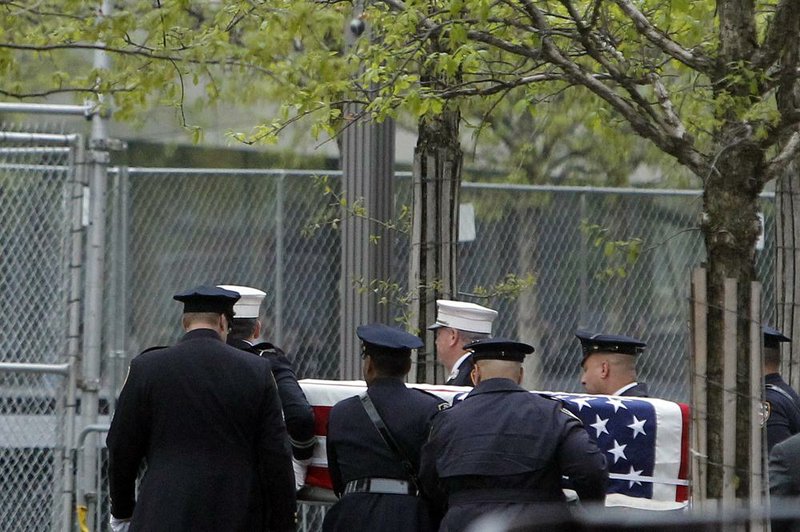NEW YORK -- The unidentified remains of those killed in the Sept. 11, 2001, terrorist attacks returned to the World Trade Center site in a solemn procession Saturday morning.
The remains left the office of the chief medical examiner in Manhattan shortly before 7 a.m. in three city vehicles. They were accompanied by Police Department and Fire Department vehicles with lights flashing but no sirens.
Construction workers paused as the motorcade passed, and about 10 firefighters stood saluting the vehicles as they arrived. The remains were being transferred to a repository 70 feet underground in the same building as the National September 11 Memorial and Museum.
Like many decisions involving the site of the nation's worst terrorist attack, the disposition of the unidentified remains has been contentious.
Victims' family members who say the remains should be stored in an above-ground monument separate from the museum protested the procession. About a dozen wore black bands over their mouths at the site Saturday.
"It's horrible. I am so angry. I am so angry. I am outraged," said Sally Regenhard, whose firefighter son was killed at the trade center.
"The human remains of my son and all of the 3,000 victims should be in a beautiful and respectful memorial, not in the basement of a museum," she said.
Rosemary Cain, who also lost her firefighter son at the trade center, said she was upset about the transfer.
"I don't know how much of him is down here; if it's one little inch, I want it treated respectfully," she said. "I want it aboveground. I don't want it to be part of a museum. I don't want it to be part of a freak show."
Museum officials have said that the repository is separate from the museum.
"There was never a plan, and there still isn't a plan, for the human remains to ever be part, in any way, of our exhibition," Joseph Daniels, chief executive of the museum, said at a news conference in January.
Other family members support the plans. Lisa Vukaj, who lost her 26-year-old brother, said the new home for the remains is "a fitting place until technology advances" and new techniques are available to identify their loved ones.
Vukaj said she didn't like that some victims' relatives turned what should have been a solemn event into "a political thing."
"Just come in, pay your respects, be here, have your emotions and don't make it political," she said.
Officers from the New York Police Department and Fire Department of New York and the Port Authority police carried the three coffins into the repository.
City officials have said that victims' families would be able to visit a private "reflection room" in the repository and that the entire repository area would be closed to the public.
The remains are to stay under the medical examiner office's jurisdiction, and identification work will be done off-site at its DNA laboratory. Officials hope that improvements in technology will eventually lead to the identification of the 7,930 fragmentary remains.
The death toll in the attacks at the World Trade Center was 2,753. Of those, 1,115, or 41 percent, have not been identified.
Information for this article was contributed by Stephen Farrell of The New York Times.
A Section on 05/11/2014

